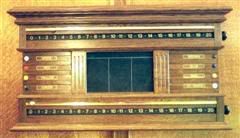Good Afternoon,
I have just introduced myself on the Newbie forum, but I have a question...
What are all the different rows for on the scoreboard attached? There are only ever 2 players (barring doubles) so why do you need so many rows?
Also, what are the top rows for?
They have scoreboards like this at my club and I feel like an fool for not knowing!
Cheers
I have just introduced myself on the Newbie forum, but I have a question...
What are all the different rows for on the scoreboard attached? There are only ever 2 players (barring doubles) so why do you need so many rows?
Also, what are the top rows for?
They have scoreboards like this at my club and I feel like an fool for not knowing!
Cheers






Comment